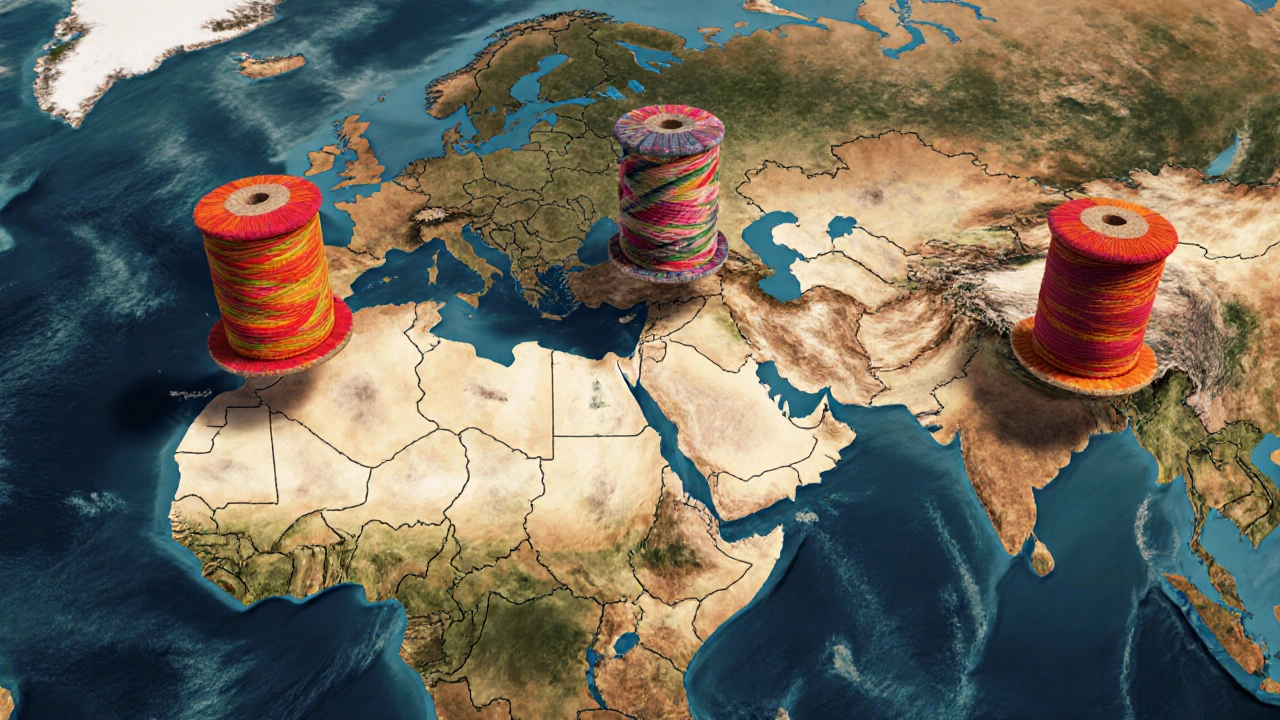Textile Industry India: What’s Hot, What’s Growing, and How You Can Join In
India’s textile sector is a massive engine for jobs and exports. In 2023 it crossed $150 billion in revenue, and the numbers keep climbing. Why? Cheap labor, a huge domestic market, and a wave of new tech are all in play. If you’re thinking about jumping into the field, you’re looking at a space that touches everything from cotton shirts to high‑tech composites.
Key Drivers Behind the Boom
First up, the government’s “Make in India” push has cleared a lot of red‑tape for factories. Tax breaks, easier land allocation, and subsidies for modern looms have lowered entry barriers. Second, consumer demand is shifting – people want faster fashion, sustainable fabrics, and custom fits. That’s why you hear a lot about “fast‑fashion” hubs in Gujarat and “eco‑textiles” emerging in Tamil Nadu.
Third, technology is redefining the game. Digital printing, AI‑driven pattern design, and automation are cutting waste and speeding up production. Small players can now use on‑demand printing services instead of owning huge inventories, which keeps costs low and cash flow healthy.
Where the Money Is: Profitable Niches
If you want a good return, look beyond plain cotton. Technical textiles – think automotive‑grade fabrics, medical gowns, and sports‑performance gear – command higher margins. The Indian government classifies these as “priority sectors,” so they get extra support.
Another hot segment is home‑textiles: bed‑linen, curtains, and upholstery. With the real‑estate boom and a rise in interior‑design culture, demand is steady and customers are willing to pay a premium for quality.
Don't overlook the export angle. Countries like the US, EU, and Bangladesh import a lot of Indian yarn and fabrics. If you can meet quality standards (like Oeko‑Tex), you’ll find buyers eager to pay for reliable, cost‑effective supply.
How to Start Your Own Textile Venture
1. Pick a niche. Decide if you want to be a yarn producer, garment maker, or tech‑textile supplier. Your choice will dictate the machinery and skill set you need.
2. Secure financing. A small‑scale setup can start with ₹10‑20 lakh for a basic loom and a modest workforce. Look for state schemes that offer low‑interest loans for textile startups.
3. Find a location. Industrial clusters in Surat, Coimbatore, and Bhiwandi offer ready‑made infrastructure and a pool of skilled workers.
4. Get the right licenses. You’ll need a Factory License, GST registration, and, for certain products, a Pollution Control Board clearance.
5. Invest in technology. Even a basic digital printer can let you offer custom designs and reduce inventory risk.
Challenges to Watch Out For
Power cuts still plague many regions, so a backup generator is a must. Also, raw material prices – especially cotton – can swing wildly, impacting margins. Building strong relationships with farmers or buying from regulated markets can help lock in prices.
Lastly, compliance matters. International buyers check for certifications like ISO 9001 and sustainability labels. Skipping these steps can close off big export doors.
Future Outlook
By 2027 the Indian textile industry is projected to hit $200 billion, driven by smart fabrics and a stronger push toward sustainability. Companies that adopt green dyes, recycle water, and use renewable energy will not only meet regulations but also attract eco‑aware customers.
So whether you’re a seasoned entrepreneur or a fresh graduate with a passion for fabrics, the Indian textile sector offers room to grow. Pick a niche, stay tech‑savvy, and keep an eye on sustainability – that’s the recipe for a thriving textile business in India today.
India's Rank in Global Textile Production - 2025 Insights
India holds the 3rd spot in global textile production, delivering about 115 million metric tons in 2024‑25. Learn the factors behind the rank, regional strengths, export performance, challenges, and future outlook.
Read MoreCurrent Trends and Challenges in India's Textile Industry
The Indian textile industry is an intricate tapestry of history, culture, and economic significance. As of 2024, it stands as one of the world's largest and most diverse textile sectors, providing millions of jobs and contributing significantly to the country's GDP. However, this vibrant industry faces challenges such as high competition, environmental concerns, and the need for technological advancement. Understanding these aspects can offer insightful views on the industry's future trajectory and its role in global markets.
Read More





